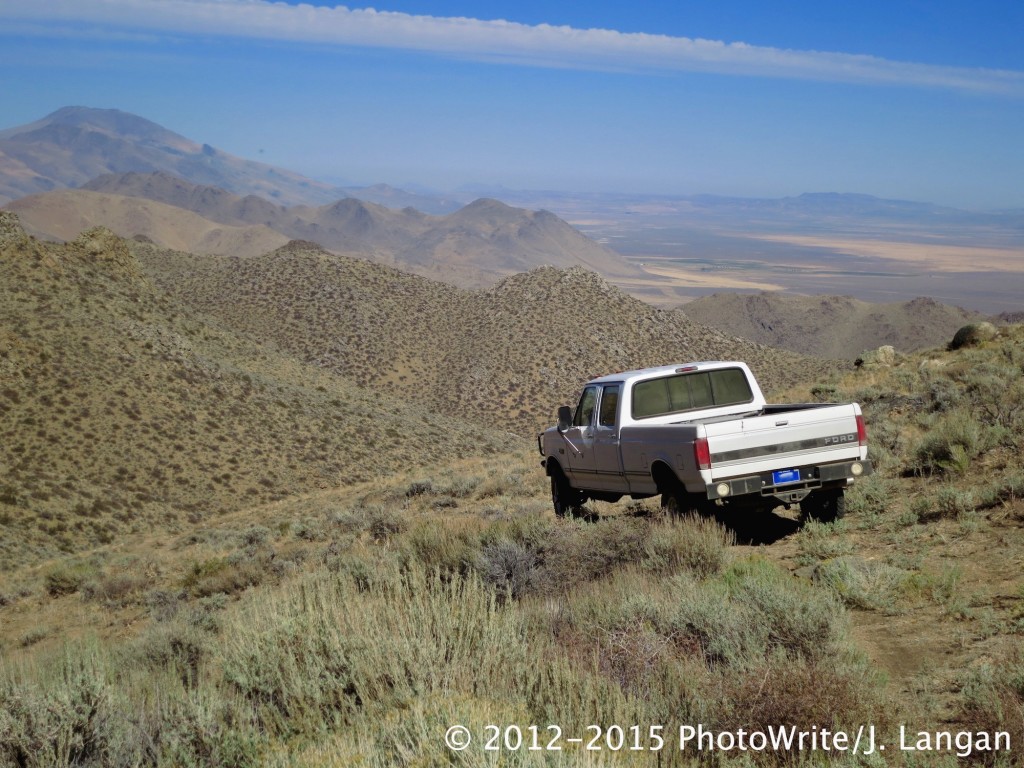
It’s time to continue telling this story, too much has passed, time for closure and for a small blog revival. Depending on your point of view, particularly if you are a Toyo Open Country M/T fan, you may consider this a not-so-happy ending. We will get there together…eventually.
Within ten days of ownership these LT255/85R16E Toyos saw many miles of both graded byways and less traveled four-wheel-drive roads, but nothing one would consider extreme four-wheel-drive use or abuse. The on-payment towing miles involved heavy but not maximum loads, or excessively high freeway speeds. The trailer parts run to town and back added some unloaded highway miles, but of course the tires were appropriately inflated for pavement travel.
My hunting partner Charlie has been running the 33.5-inch tall LT295/70R17E Toyo Open Country M/T tires on his 2007 Dodge Cummins Turbo Diesel since new. He’s never been thrilled with their longevity, getting about 30,000 miles from each set, and by that mileage they are gone. He doesn’t drive hard or aggressively, but he does use his truck as a truck, and typically not a daily-driver. His rig sees some loads, mostly the occasional pulling of a moderate travel trailer (approximately 6,500 pounds), plus some bed cargo, and recently more highway miles running between Nevada and Oregon. One of his observations and comments regarding the Toyo M/T that I’ve never forgotten was that the tread seems to “almost melt off the casings” when towing. Before we get to the wear, there was another development during this trip I want to share.
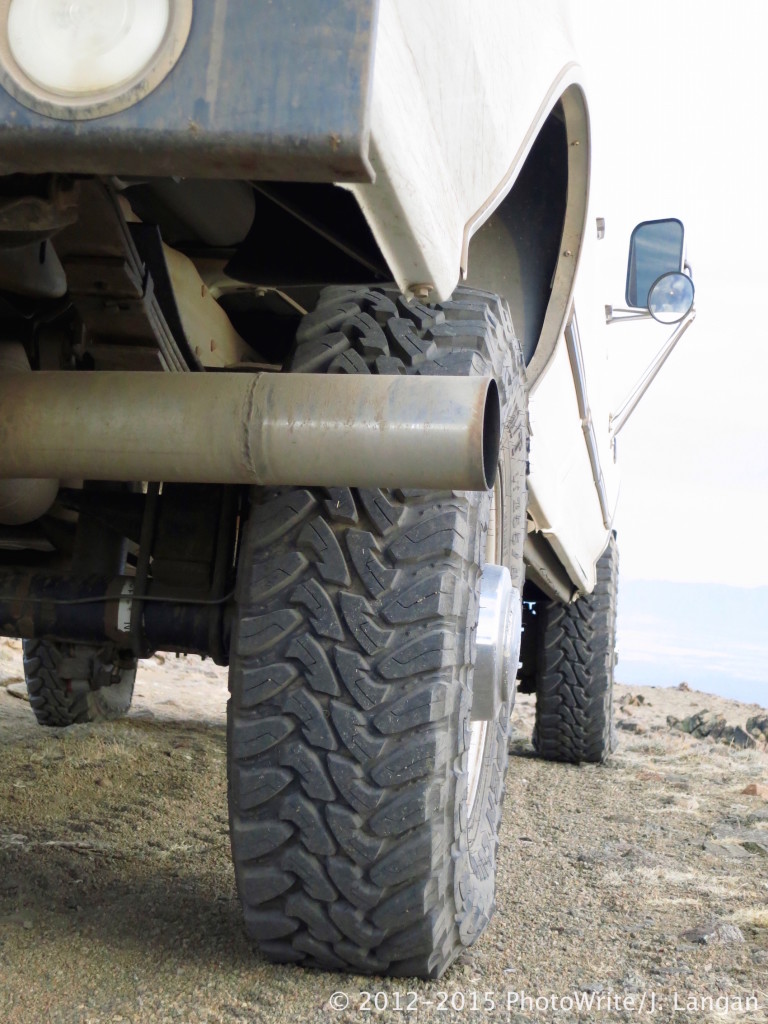
No Tire Is Immune From Damage
Even the most rugged tires are relatively fragile when the conditions are right. They are all just rubber balloons, relatively soft compared to the hard and sometimes sharp and pointy objects we pilot them over. A few years ago while on a very remote section of trail with a large group of backcountry 4WD travelers, I cut a sidewall on one of my Dick Cepek F-C II tires. I received a good ribbing from a few guys for running thin, 2-ply sidewalls. My assessment then was the same as it is today, 3-ply sidewalls are nice and can help, I like and sometimes even prefer them, but they are also sometimes unreasonably worshiped. Again, any tire can be compromised, and I won’t avoid running a particular tire just because it doesn’t have a 3-ply sidewall.
We Have A Leak
Midweek it was apparent that the right-rear tire was lower than the others, all had been lowered for off-highway travel. The first measurement used was my keen eye, followed by a tire pressure gauge; there was obviously a leak. Assuming the tread had been damaged, I pulled out my tools and prepared to repair the tire with a plug. Charlie was excited to watch the procedure, and I started looking for the signs of a puncture and squirting glass cleaner on possible sites.
Spraying and probing several possible holes the location of the leak remained a mystery, which is not surprising for a small, slow leak. I was cautious with the probe, avoiding creating a hole where one didn’t already exist.
Air loss was moderate and we were traveling slowly in the backcountry until heading home, so I decided I’d just keep filling it as needed, and save the spare for if or when things got worse. The leak remained steady and we were able to finish our hunting trip using the F-350 without concern. For the highway drive home I filled the tire a little higher than the others, kept an eye on it, and it was fine. Then I drove to my local Les Schwab Tires for an expert diagnosis.
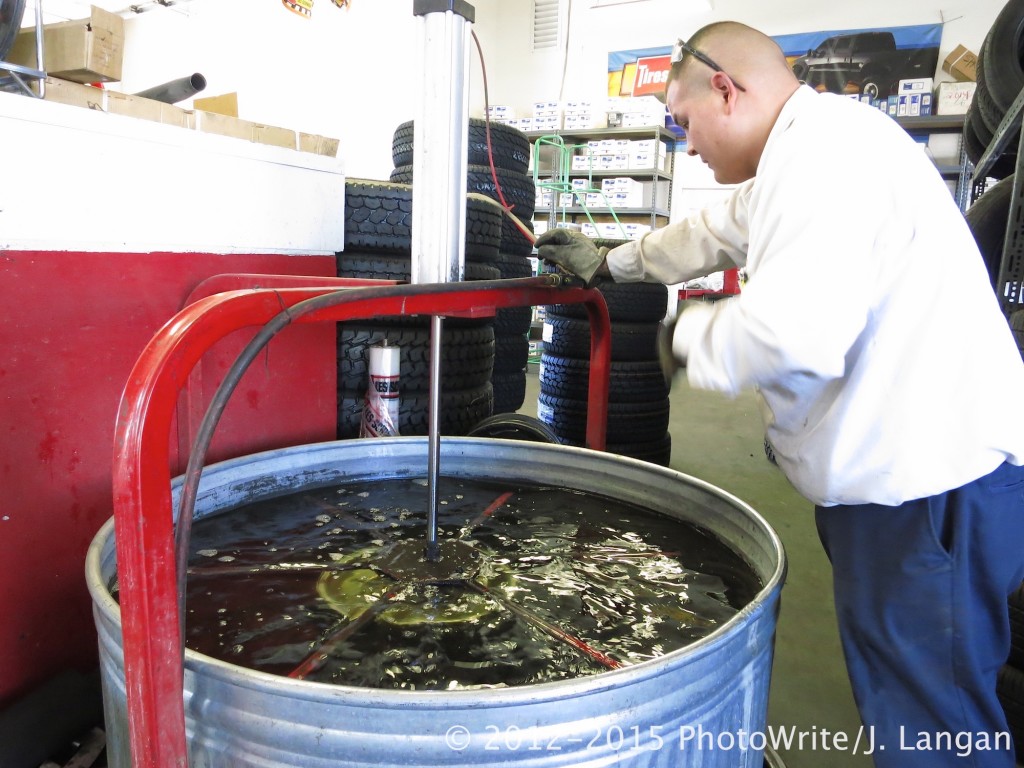
Oh No, It’s A Sidewall Puncture
Hard to find slow leaks are easier to locate once a tire and wheel are removed from the truck and submerged in a tank. That was the case here, with telltale bumbles emanating from the outer sidewall. Ouch, a sidewall puncture on an almost new tire! If I’d thought to look for and located the sidewall leak I would have plugged it while in the bush, or pulled and mounted the spare. The tire was very young though wearing quickly on the rear axle, but still had enough tread remaining to qualify for a new, 100% replacement.
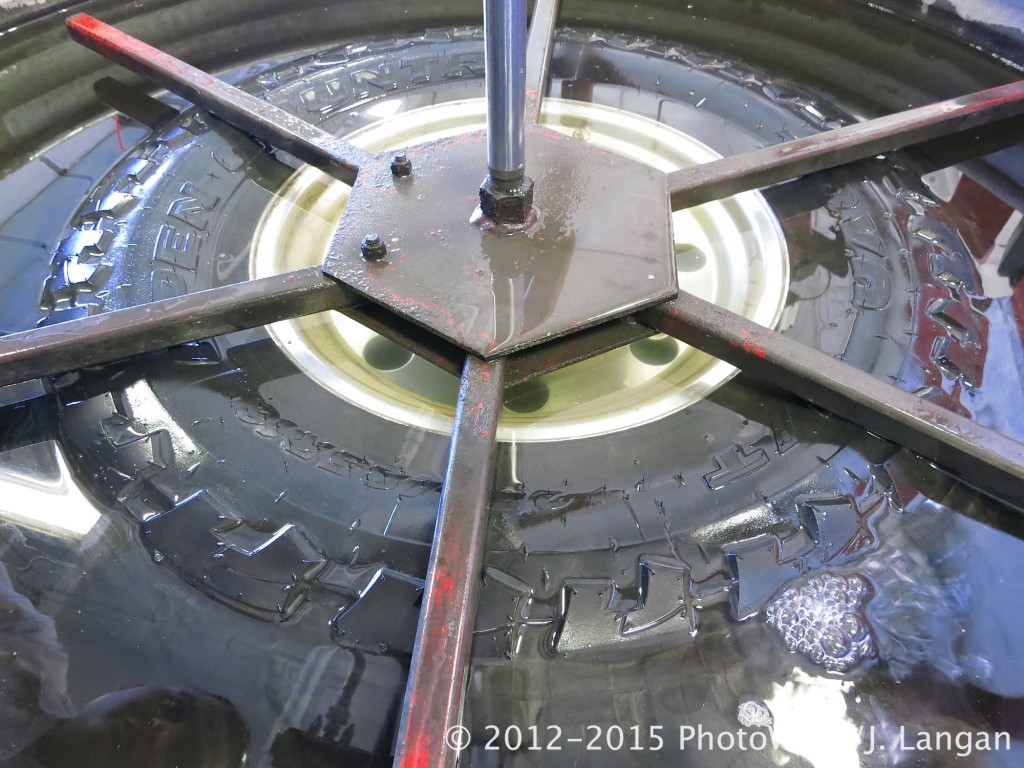
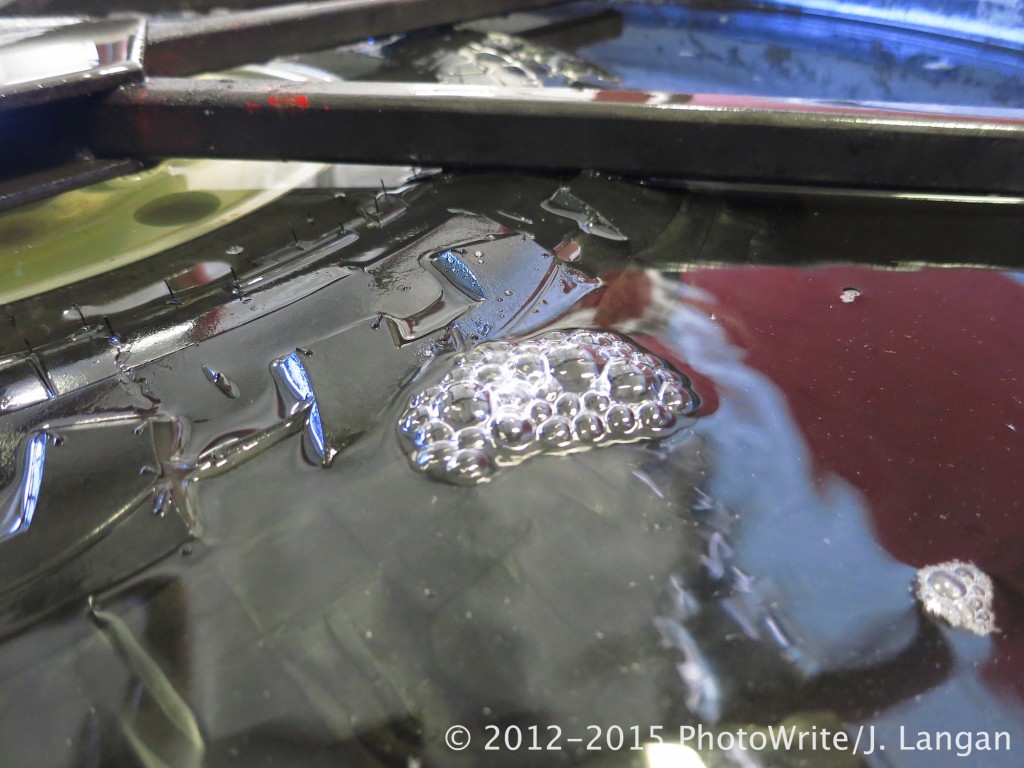
Copyright 2015 James Langan/PhotoWrite/RoadTraveler. All rights reserved.
